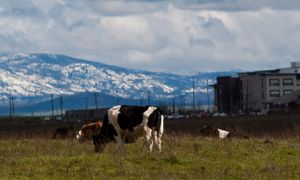Grass, Rabbits, and Wolves-- Oh My!
Grades 3 -
8
Biology/Ecology
Activity
Educational Objectives
By the end of this activity, students will be able to:
- Explain the concepts of predators, prey, food chains, and food webs in an ecosystem.
- Use a computer model
Audience
K-12
NGSS Crosscutting Concepts: Patterns | Cause and Effect - Mechanism and Explanation | Scale, Proportion, and Quantity | Systems and System Models | Energy and Matter - Flows, Cycles, and Conservation | Stability and Change
NGSS Science & Engineering Practices: Asking Questions and Defining Problems | Planning and Carrying Out Investigations | Analyzing and Interpreting Data | Developing and Using Models | Constructing Explanations and Designing Solutions
NGSS Disciplinary Core Ideas: PS3 - Energy | LS1 - From Molecules to Organisms: Structures and Processes | LS2 - Ecosystems: Interactions, Energy, and Dynamics | LS4 - Biological Evolution: Unity and Diversity | ESS2 - Earth’s Systems | ETS1 - Engineering Design
Observatory: Sierra CZO
Author(s): Michelle Gilmore (UC Merced) and Lynn Sullivan (UC Merced)
Funding: Southern Sierra Critical Zone Observatory
Details for this Resource
In a food chain, producers and consumers transfer energy throughout an ecosystem. In this activity designed for 3rd-8th graders, students use a game of tag and a computer model to understand energy transfer through an ecosystem, and predict how changes in species functions and interactions can impact the system.
Note: Proposed NGSS alignment and 5E lesson structure (less Evaluate) are included in the activity guide. This activity was originally developed for Merced County Office of Education's TEAM-E Science Training for elementary and middle school teachers.
Explore Further


